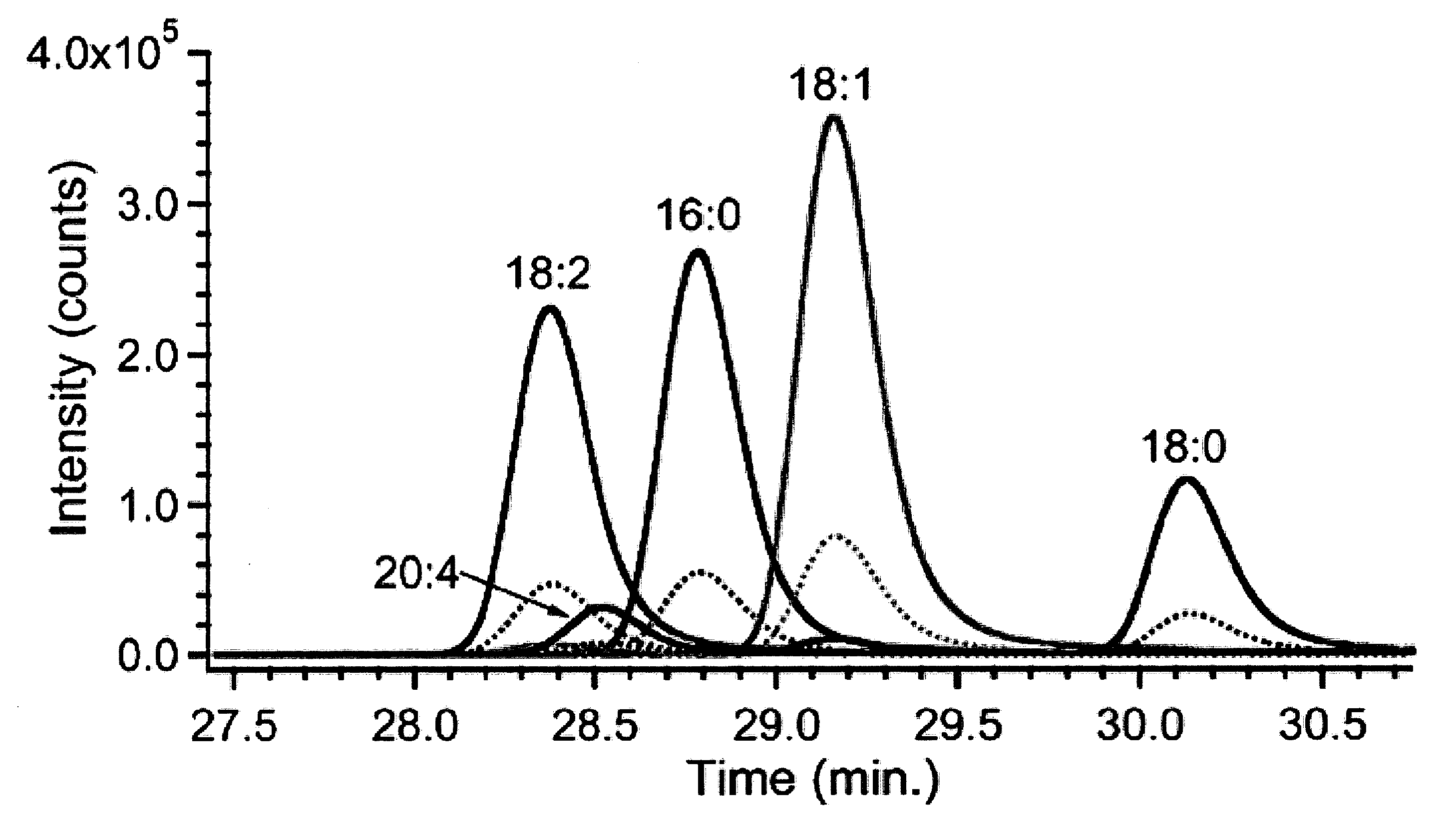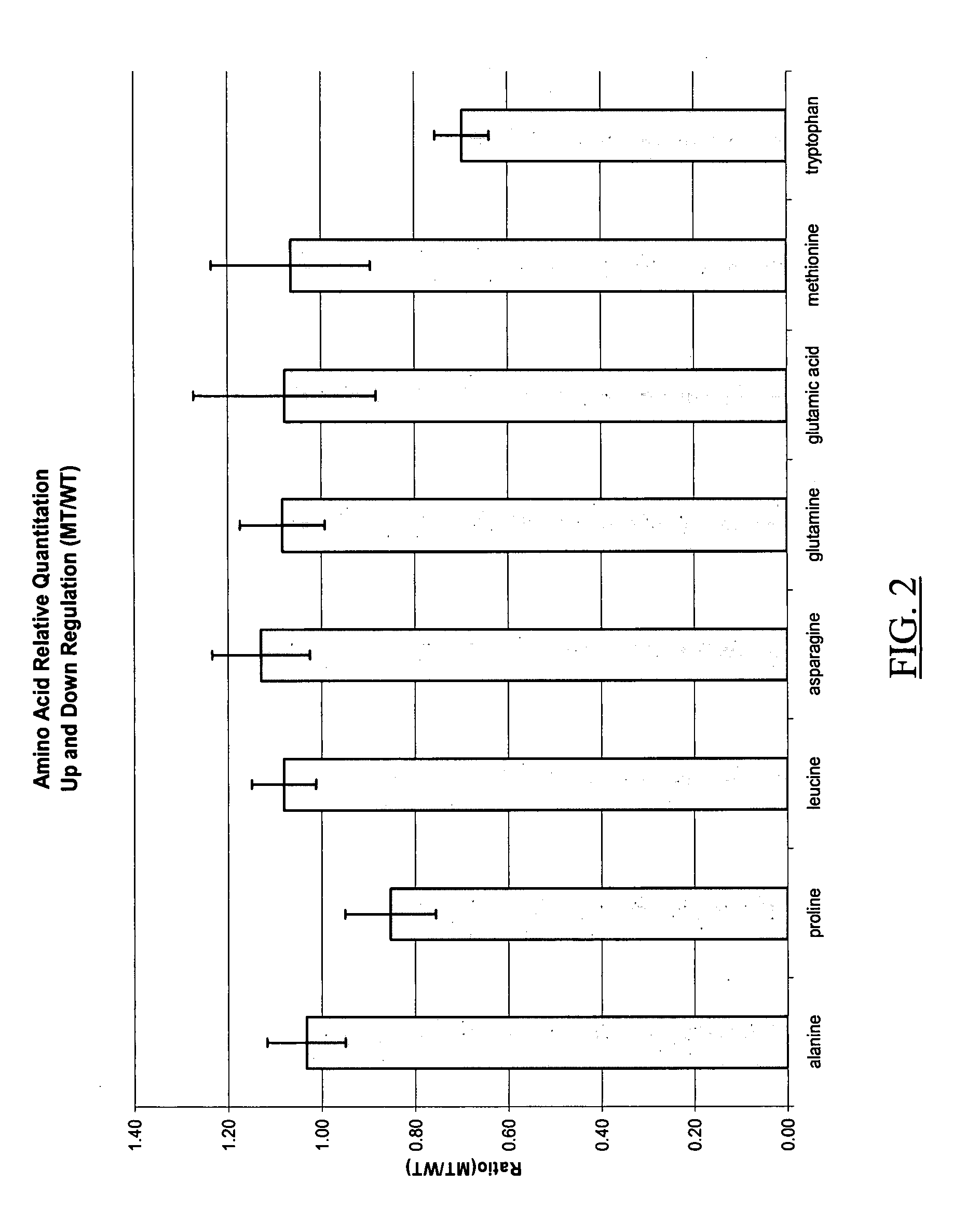Ionizable isotopic labeling reagents for relative quantification by mass spectrometry
a technology of mass spectrometry and isotopes, which is applied in the field of isotope labeling, or derivatization, reagents, can solve the problems of limited use of relative quantification by mass spectrometry, difficult/expensive or impossible uniform incorporation of these isotopes into all metabolites of animals, and inability to add an isotope standard for every compound, etc., to achieve the effect of improving pka and/or hydrophobi
- Summary
- Abstract
- Description
- Claims
- Application Information
AI Technical Summary
Benefits of technology
Problems solved by technology
Method used
Image
Examples
example 1
[0131] Synthesis of 12C2- and 13C2-Methylacetimidate. The synthesis of methylacetimidate was based in part on a published synthesis. (Hunter M J et al., In Methods in Enzymology—Enzyme Structure Part B; Hirs C H W et al., Eds.; Academic Press: New York and London, 1972; Vol. XXV, pp 585-596). A Pyrex test tube was fitted with a triangular stirvane and a rubber septum and purged with N2. Dry electronic grade methanol (Fisher), 0.625 mL (15.5 mmol), was added to the vial. Then, 868 mg (23.8 mmol) of gaseous HCl was added over a period of approximately three hours at room temperature. The HCl gas was generated in a N2-purged round-bottom flask by slow drop-wise addition of concentrated H2SO4 onto solid NaCl with stirring. The gas outlet of this flask was connected to a drying line filled with CaSO4 and then introduced to the reaction vial through a Teflon coated syringe needle. Under positive N2 pressure, the reaction test tube was moved to a dry ice / acetone bath and 0.625 mL (11.9 mmo...
example 2
[0133] Optimization of Methylacetimidate Reaction Conditions. The labeling reaction between primary and secondary amines and methylacetimidate hydrochloride utilizes a solvent system in which both the amine-containing metabolites and methylacetimidate hydrochloride are soluble. Fairly polar metabolites, such as amines, are typically extracted from biological samples using binary mixtures of either methanol:water or acetonitrile:water. (Want E J et al., Anal. Chem. 2006, 78, 743-752). Therefore, similarly polar solvent systems may be targeted for the optimization of methylacetimidate labeling of amine containing metabolites. Valine (Val) and proline (Pro) provide challenging reaction conditions because the bulky side chain of Val and the secondary amine of Pro often make coupling to their amines difficult. Each amino acid (5.0 mM) was reacted with varying amounts of methylacetimidate in MeOH, water or binary mixtures thereof. The concentration of triethylamine (TEA), a basic tertiary...
example 3
[0136] Enhancement of Amino Acid Ionization by Derivatization with Methylacetimidate. Qty. 4 amino acids (tryptophan, asparagine, glutamic acid and valine) were dissolved in 95:5 methanol:water (including 20 equivalents triethylamine) to a final concentration of 2.5 mM. A 95:5 methanol:water (with 100 mM triethylamine) produced quantitative labeling. A slight molar excess of methylacetimidate hydrochloride compared with the amine reactant is preferred. Two equivalent equimolar mixtures of the four amino acid solutions were prepared. One 1 mL aliquot of that solution was combined with 22.3 mg of methylacetimidate-HCl and reacted overnight. A second 1 mL aliquot of the equimolar mixture was the control. Both aliquots were diluted 1:100 in 80:20 acetonitrile:water having 0.1% formic acid. Each aliquot was separately analyzed by electrospray MS. A 1:1 mixture of the labeled and unlabeled respective amino acids was prepared and analyzed in a similar manner. A peak is observed for each of...
PUM
| Property | Measurement | Unit |
|---|---|---|
| mass | aaaaa | aaaaa |
| weight | aaaaa | aaaaa |
| weight | aaaaa | aaaaa |
Abstract
Description
Claims
Application Information
 Login to View More
Login to View More - R&D
- Intellectual Property
- Life Sciences
- Materials
- Tech Scout
- Unparalleled Data Quality
- Higher Quality Content
- 60% Fewer Hallucinations
Browse by: Latest US Patents, China's latest patents, Technical Efficacy Thesaurus, Application Domain, Technology Topic, Popular Technical Reports.
© 2025 PatSnap. All rights reserved.Legal|Privacy policy|Modern Slavery Act Transparency Statement|Sitemap|About US| Contact US: help@patsnap.com



